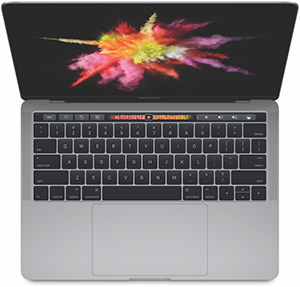
- WHICH MACBOOK PRO BEST FOR VIDEO EDITING PRO
- WHICH MACBOOK PRO BEST FOR VIDEO EDITING SOFTWARE
- WHICH MACBOOK PRO BEST FOR VIDEO EDITING PC
- WHICH MACBOOK PRO BEST FOR VIDEO EDITING DOWNLOAD
- WHICH MACBOOK PRO BEST FOR VIDEO EDITING WINDOWS
WHICH MACBOOK PRO BEST FOR VIDEO EDITING PRO
To answer this question, The Everyday Dad puts this fun-sized MacBook Pro to the test, and gives us his take on what it would be like to use the cheapest of Apple’s Pro line laptop as your only editing system for cutting your videos.ĭetermining what editing system will meet your needs as a content creator can be a tricky business.
WHICH MACBOOK PRO BEST FOR VIDEO EDITING SOFTWARE
At the very least you'll still be able to use all your current software as normal via Rosetta 2, and in time when official M1 versions are released, those performance boosts - and likely the battery life savings as well - will be extremely welcome.What would it be like using the base model $1,299 13″ 1.4Ghz Quad-Core i5 MacBook Pro with 8GB of RAM and a 256GB SSD to cut multiple streams of 4K 10-bit 4:2:2 from a Panasonic GH5? Is the system fast enough, powerful enough to not only play and edit the material but also to render and deliver the final video in a timely manner? Are the specs enough for the daunting task of professional editing, or would this system crash and burn? If you're a photographer and considering upgrading, I'd absolutely say the M1 MacBook is a safe bet. I'm certainly excited about what performance improvements we'll see as more developers fully optimize their software for Apple's silicon.

WHICH MACBOOK PRO BEST FOR VIDEO EDITING PC
Even when running unoptimized versions of apps, the M1 MacBook Pro still puts up a hell of a fight against a superpowered editing PC, and the fact that it's able to outperform the PC on some tests when using M1-optimized beta apps is astonishing. Pro video software DaVinci Resolve Studio is also available in beta for M1, and I found it was extremely quick to use, with no issues previewing 4K files in a timeline. Capture One has said an M1-optimized version is coming in an update, but we don't know exactly when this will be. It took 51 seconds to import 100 raw images into pro image-editing software Capture One, and the desktop wasn't much in front at 48 seconds. Other software that isn't optimized still runs as normal, and you'd never know that you're running "emulated" versions of software, as the machine's overall performance is still excellent. Total time to complete focus stack in Adobe Photoshop (align and merge layers) In the M1-supported version of Lightroom, it took the MacBook 6.4 seconds to import 100 raw images, edging out the PC's time of 7.1 seconds to complete the same task. It took 22 seconds to align the layers and 46.6 seconds to merge them - a faster overall time than my immensely powerful editing rig was able to achieve. I then ran the same tests on the beta version of Photoshop that supports Apple M1. The PC took 20 seconds to align the layers and 53 seconds to merge them - a clear victory for the PC.
WHICH MACBOOK PRO BEST FOR VIDEO EDITING WINDOWS
I compared that to an exceptionally powerful Windows desktop PC that was built with an AMD RyX CPU, Nvidia RTX Titan graphics and 128GB RAM, specifically to be a beast with editing photos and 8K video. Intel-based Photoshop, via Rosetta 2, took 50.3 seconds to align the layers and 1 minute, 37 seconds to merge them. It's a technique I use regularly in my product photography, so it's important for me to have good efficiency here. I tested how long it took Photoshop (both in Intel and M1 beta versions) to align 19 full-resolution raw images and then to merge them into a focus-stacked image. The improvements are noticeable when using M1-optimized versions. Even Lightroom Classic (the Intel version) still ran well when used via Rosetta 2.

Lightroom ran lightning fast, and allowed for extremely swift editing and exporting. In my hands-on testing, I found the M1 versions of Adobe's apps to run extremely swiftly. That means any app you'd normally want to use on your MacBook will still be able to run on the new model without any difference in how it operates, and you likely won't see much in the way of performance degradation, although that can vary app by app. While these apps aren't optimized, they will still run, thanks to Apple's Rosetta 2 software, which allows Intel versions of software to run as normal.
WHICH MACBOOK PRO BEST FOR VIDEO EDITING DOWNLOAD
The industry-standard Photoshop only supports M1 when you download the beta version, and Adobe hasn't officially given any kind of timeline for when all its Creative Cloud suite of apps will fully support Apple M1. At the time of writing, Adobe has released an M1 version of Lightroom, but not Lightroom Classic (the version that I, along with most photography pros, still use).

That's potentially a problem, as it requires software developers to support two versions of their products an Intel version and an Apple M1 version. To get the best performance, the programs you use will need to be rewritten to properly take advantage of the new hardware. Apple using its own chips might seem like a small change that you'll never need to think about, but it has a big impact on how software will run.


 0 kommentar(er)
0 kommentar(er)
